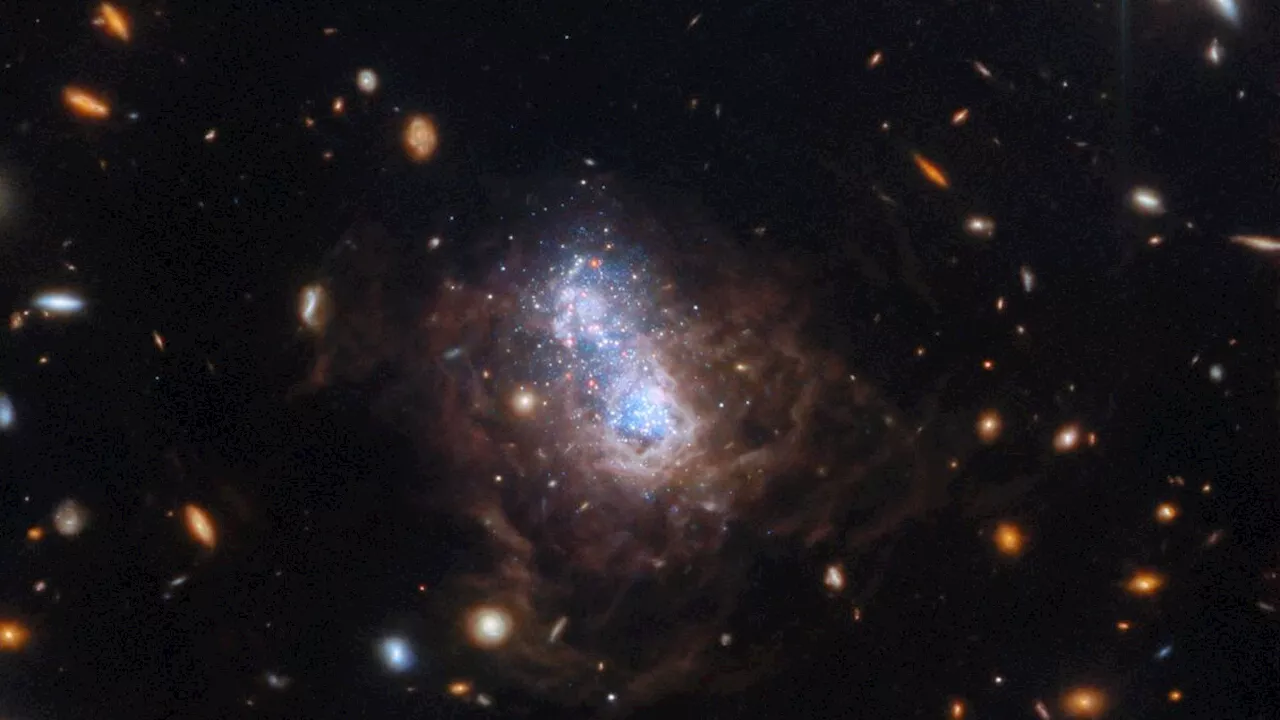Samantha Mathewson joined Space.com as an intern in the summer of 2016. She received a B.A. in Journalism and Environmental Science at the University of New Haven, in Connecticut. Previously, her work has been published in Nature World News.
The dwarf irregular galaxy I Zwicky 18 lies at the center of this image. The bright region of white and blue stars at the galaxy’s core appear as two distinct lobes, representing different periods of star formation.Marvel at the James Webb Space Telescope's largest image of the cosmos yet
Wispy brown filaments surround the central starburst region in the new JWST photo. These filaments represent bubbles of gas that have been heated by stellar winds and intense ultraviolet radiation unleashed by hot, young stars, according to aobservations of I Zw 18 revealed fainter, older red stars within the galaxy, suggesting its star formation started at least one billion years ago — possibly as much as 10 billion years ago.
The recent image, which was released on March 26, was taken as part of an initiative to study the life cycle of dust in I Zw 18. Building on the observations taken by Hubble at optical wavelengths, the JWST is able to study the dwarf galaxy in greater detail at infrared wavelengths. "This galaxy is of particular interest as its content of elements heavier than helium is one of the lowest of all known galaxies in the local," ESA officials said in the statement."Such conditions are thought to be similar to those in some of the first star-forming galaxies at high, so the Webb study of I Zw 18 should shed light on the life-cycle of stars and dust in the early universe.
When not writing or reading about science, Samantha enjoys traveling to new places and taking photos! You can follow her on Twitter @Sam_Ashley13.
Norge Siste Nytt, Norge Overskrifter
Similar News:Du kan også lese nyheter som ligner på denne som vi har samlet inn fra andre nyhetskilder.
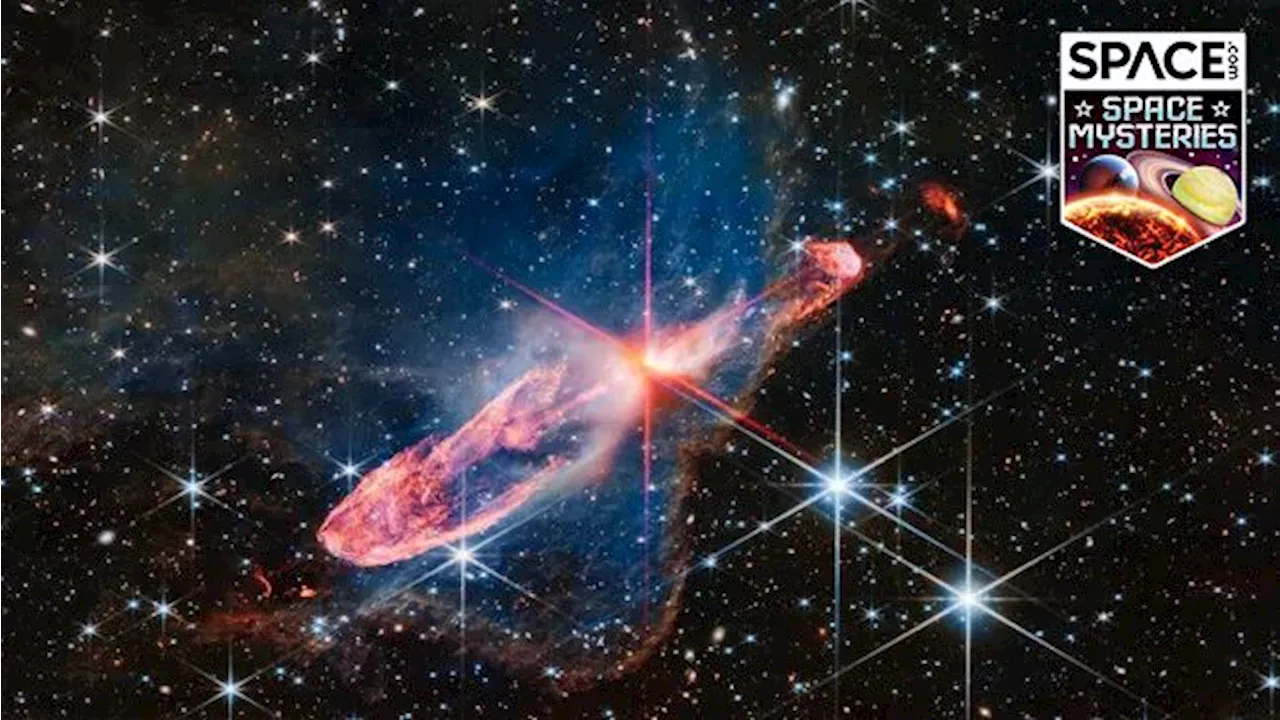 What are the true colors of images from the James Webb Space Telescope?Rebecca Sohn is a freelance science writer. She writes about a variety of science, health and environmental topics, and is particularly interested in how science impacts people's lives. She has been an intern at CalMatters and STAT, as well as a science fellow at Mashable.
What are the true colors of images from the James Webb Space Telescope?Rebecca Sohn is a freelance science writer. She writes about a variety of science, health and environmental topics, and is particularly interested in how science impacts people's lives. She has been an intern at CalMatters and STAT, as well as a science fellow at Mashable.
Les mer »
 James Webb Space Telescope captures the end of planet formationHow much time do planets have to form from a swirling disk of gas and dust around a star? A new study gives scientists a better idea of how our own solar system came to be.
James Webb Space Telescope captures the end of planet formationHow much time do planets have to form from a swirling disk of gas and dust around a star? A new study gives scientists a better idea of how our own solar system came to be.
Les mer »
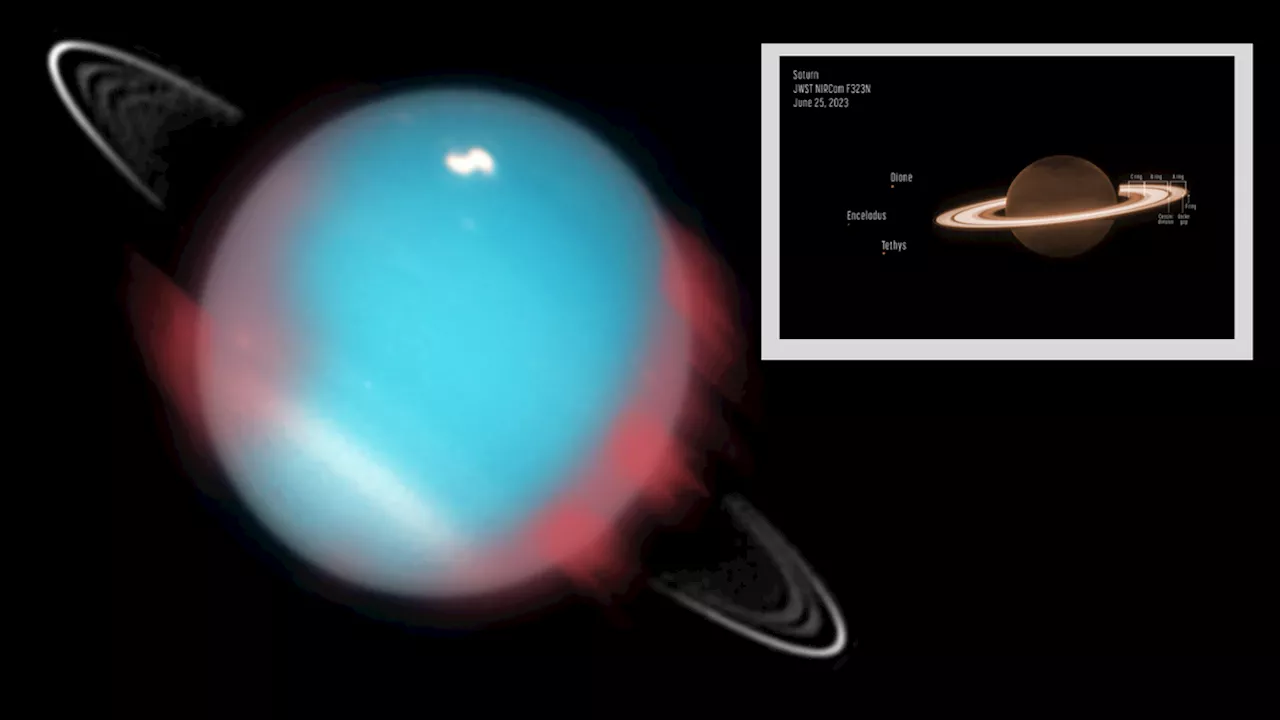 James Webb Space Telescope to investigate the stunning light shows of Saturn and UranusRobert Lea is a science journalist in the U.K. whose articles have been published in Physics World, New Scientist, Astronomy Magazine, All About Space, Newsweek and ZME Science. He also writes about science communication for Elsevier and the European Journal of Physics. Rob holds a bachelor of science degree in physics and astronomy from the U.K.
James Webb Space Telescope to investigate the stunning light shows of Saturn and UranusRobert Lea is a science journalist in the U.K. whose articles have been published in Physics World, New Scientist, Astronomy Magazine, All About Space, Newsweek and ZME Science. He also writes about science communication for Elsevier and the European Journal of Physics. Rob holds a bachelor of science degree in physics and astronomy from the U.K.
Les mer »
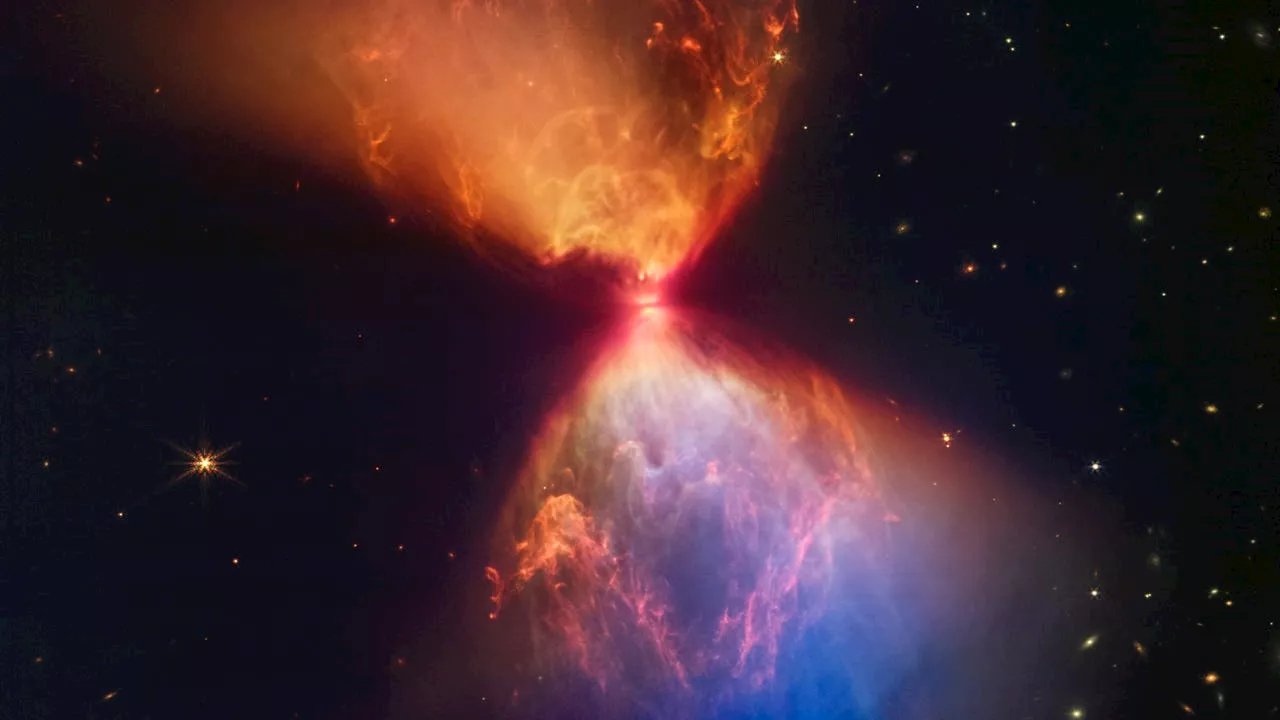 See images from NASA’s James Webb Space Telescope in new IMAX documentaryThe documentary “Deep Sky” will be in select IMAX theaters across the country in April. Here’s how you can see it.
See images from NASA’s James Webb Space Telescope in new IMAX documentaryThe documentary “Deep Sky” will be in select IMAX theaters across the country in April. Here’s how you can see it.
Les mer »
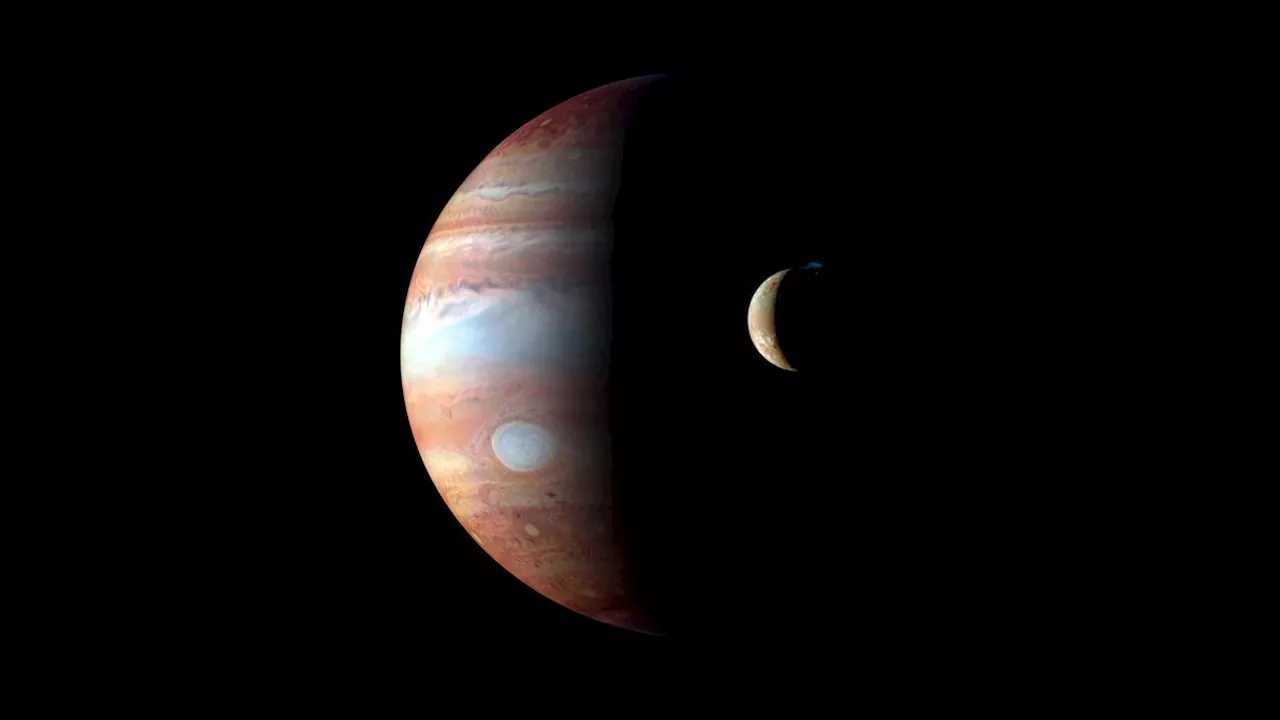 The James Webb Space Telescope is digging deep into the mysteries of gas planetsMonisha Ravisetti is Space.com's Astronomy Editor. She covers black holes, star explosions, gravitational waves, exoplanet discoveries and other enigmas hidden across the fabric of space and time. Previously, she was a science writer at CNET, and before that, reported for The Academic Times.
The James Webb Space Telescope is digging deep into the mysteries of gas planetsMonisha Ravisetti is Space.com's Astronomy Editor. She covers black holes, star explosions, gravitational waves, exoplanet discoveries and other enigmas hidden across the fabric of space and time. Previously, she was a science writer at CNET, and before that, reported for The Academic Times.
Les mer »
